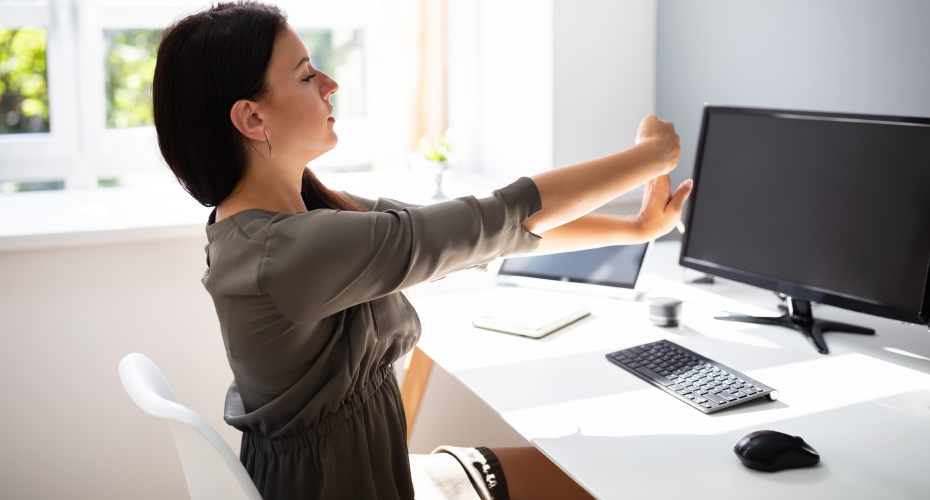Mar 24, 2020
Staying well while teleworking
Every day, I consult with large companies on how to improve the health and well-being of their employees. The No. 1 question I’m hearing in the midst of the coronavirus outbreak is: How can I support my employees’ health and well-being now when many of them are working remotely?
This can be difficult and stressful, especially if we live in a small apartment in the city or have a full house of spouses, children and pets. At a time when so much of life is out of our control, learning how to work “well” from home is one thing we have the power to do and a great way to help decrease our stress and boost our mood.
Here are some tips:
Create a new routine
Because the lines between work and home can quickly blur when your office is your living room, I recommend creating new “cues” or rituals to help you transition from “work” to “home,” especially at the start and end of your workday. Instead of jumping out of bed in the morning and opening your laptop, have a glass of water or a cup of coffee and some breakfast or take a short walk or do some stretches before taking a shower. I take 5-10 minutes before work to meditate and write down three things I’m grateful for (I think this crisis has made many of us realize how much we have to be grateful for). You can also set an intention or guiding principle for your day, such as being open to change or staying calm and focused. Similarly, I recommend deciding when your workday ends, putting it in your calendar and trying your best to stick to it. Take another short walk, call a friend or change your outfit.
Get set up
Distinguish between “work” and “home” by designating physical space in your house for work—preferably not your comfy couch but rather a chair and table—even if it’s a corner of your kitchen table that you set up each morning as part of your new routine. Ideally, the space should be quiet and clean and close to natural light and fresh air. Select a chair that allows you to sit upright with your feet flat on the floor, and make sure your monitor or laptop screen is in your direct line of sight so you’re not straining your neck—you can prop it up with a few books if need be. Or, get creative and build your own standing desk at your kitchen table, high-top table, kitchen counter or bar area.
Take a walk
Scheduling breaks throughout your day to get up and walk is a must, whether you’re walking around your house, the yard or the block. And remember to maintain a 6-foot distance from others before washing your hands vigorously for 20 seconds with soap and water when you get home. If you are home with family, ask them to join you to keep you accountable and make your walk more fun. Being outside in nature and walking have been shown to reduce stress and increase creativity. And don’t let bad weather get in your way—that’s what boots and umbrellas are for!
Stretch
If you can’t take frequent walk breaks (and even if you can!), doing some stretches at your desk a few times a day can be beneficial for your body and mind. Stretching our necks, wrists and backs is especially important for folks with desk jobs. I’ve created a few stretching videos of varying lengths that you can do when your body’s feeling crunched and you’re also crunched for time.
Stretching option 1
Stretching option 2
Connect with your colleagues
Even though we can’t see our colleagues in person, we can make use of technology—such as chat features, video conferencing and the good old phone—to stay connected. Studies show that creating meaningful social connections improves people’s health and well-being, which can make challenging times like these more manageable. Start your meetings with a wellness check before diving into the agenda – just ask, “How is everyone doing today?” Many companies also offer online wellness platforms that encourage social connections—check out the tools offered and challenge your colleagues to a healthy hydration or steps competition.
Breathe
We often forget how calming it can be to breathe. When you’re feeling overwhelmed, take a minute or even 10 seconds for some deep breaths. Stop what you’re doing, sit up tall and close your eyes, if that feels comfortable, and try making your exhale longer than your inhale. You can also think of a phrase or word that helps you relax, such as, “I am calm,” or “peace,” or you can visualize a relaxing place. Of course, yoga is helpful for this as well. Here is a routine I have used with classes.
Did you find this article informative?
All Coverage content can be reprinted for free.
Read more here.
Nicole Ferraro was interviewed by Rachel Coppola for this column.
Nicole is a Blue Cross Blue Shield of Massachusetts health engagement strategist as well as a certified health and wellness coach and a registered yoga teacher. Have a question about wellness that you would like us to address in a column? Contact us here!

